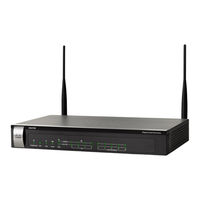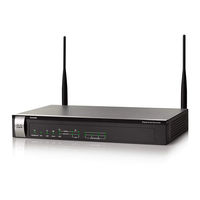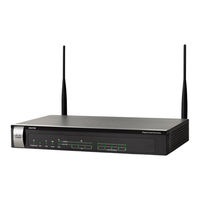User Manuals: Cisco ISA570 Security Appliance
Manuals and User Guides for Cisco ISA570 Security Appliance. We have 4 Cisco ISA570 Security Appliance manuals available for free PDF download: Administration Manual, Quick Start Manual
Cisco ISA570 Administration Manual (428 pages)
ISA500 Series Integrated Security Appliances
Brand: Cisco
|
Category: Network Hardware
|
Size: 3.85 MB
Table of Contents
-
Introduction20
-
Front Panel21
-
Back Panel23
-
-
-
Arp Table94
-
STP Status95
-
Cdp Neighbor97
-
Nat Status99
-
Vpn Status100
-
Ipsec Vpn Status100
-
Ssl Vpn Status102
-
IPS Report109
-
System Status111
-
-
Configuring DMZ140
-
Predefined Zones146
-
Configuring Vrrp172
-
-
Chapter 8: VPN
284-
About Vpns285
-
Client Mode316
-
-
-
-
Administration355
-
Configuring Snmp365
-
Ping379
-
Dns Lookup380
-
Packet Capture380
-
Upnp Discovery381
-
LLDP Discovery383
-
Log Management392
-
Viewing Logs392
-
Troubleshooting401
-
Date and Time404
-
User Management411
-
Networking412
-
Wireless416
-
Reports421
Advertisement
Cisco ISA570 Administration Manual (371 pages)
Integrated Security Appliance
Brand: Cisco
|
Category: Network Hardware
|
Size: 5.59 MB
Table of Contents
-
-
Introduction18
-
-
Front Panel20
-
Back Panel23
-
-
Installation24
-
-
-
-
-
-
Active Users87
-
VPN Status87
-
Reports91
-
-
Port Management101
-
Dynamic DNS142
-
Igmp144
-
Vrrp145
-
-
-
-
-
-
Anti-Virus226
-
Web URL Filter232
-
Chapter 8: VPN
238-
About VPN238
-
-
-
-
-
Administration296
-
Snmp298
-
Log Management308
-
-
Device Discovery327
-
-
Ping331
-
Tracert331
-
DNS Lookup332
-
Packet Capture332
-
-
-
User Management352
-
Networking353
-
Wireless358
-
Vpn359
-
Firewall363
-
Reports365
Cisco ISA570 Quick Start Manual (13 pages)
ISA500 Series Integrated Security Appliance
Brand: Cisco
|
Category: Security System
|
Size: 0.58 MB
Table of Contents
Advertisement
Cisco ISA570 Administration Manual (16 pages)
ISA500 Series
Brand: Cisco
|
Category: Security System
|
Size: 0.63 MB



